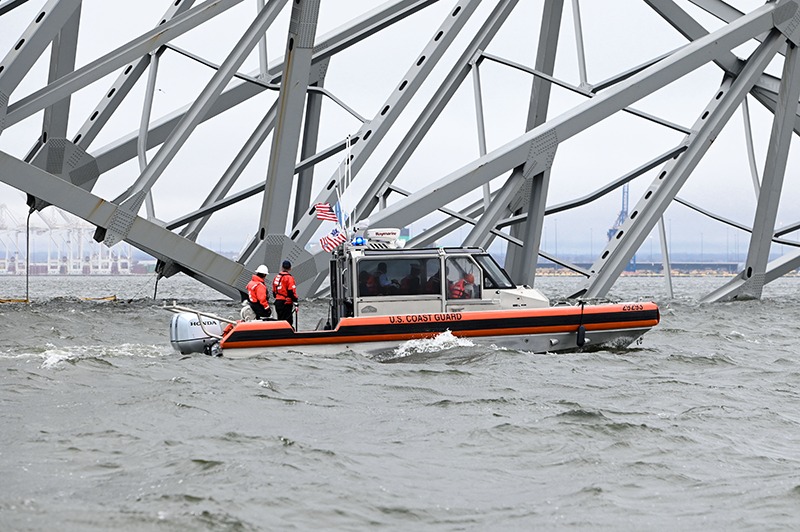
By Erika Fitzpatrick, Contributor
Future innovation within the U.S. Coast Guard comes from listening to and partnering with the defense industry, Vice Admiral Kevin E. Lunday, U.S. Coast Guard Commander of the Atlantic Area and Defense Force East, said April 8 at Sea-Air-Space 2024.
“Most of the innovation, most of the great ideas — the kernel, the incubator for those — is within the defense industrial base,” he said. The Navy League’s symposium, which he called the premiere industry-government event, is a “special opportunity to have a conversation and a dialogue.”
In addition to supporting U.S. Combatant Commands, Lunday directs Coast Guard forces and operations involving navigable waterways east of the Rocky Mountains to the East Coast, throughout the Atlantic Ocean, and in parts of the Arctic Ocean to the Arabian Gulf.
As such, his command is involved in a range of often high-profile events and issues.
For instance, when Baltimore’s Francis Scott Key bridge collapsed on March 26 within minutes of being rammed by a massive, malfunctioning container ship, Lunday directed forces there within hours for active search and rescue and follow-on recovery efforts. In cooperation with federal, state, and local partners, the USCG set up and now helps lead the Key Bridge Response Unified Command.
“While that may seem like a very unusual operation in some respects — a bridge collapse after a ship hitting it — that kind of emergency response that the Coast Guard is involved in leading is very common for what we do across the Atlantic area, across the service, every day,” he said.
Other Atlantic-area USCG operations include:
- Helping prevent and prepare for maritime mass migration incidents and fighting transnational crime in the eastern Caribbean through participation in the Joint Task Force-East.
- Controlling, reducing, and preventing deaths from irregular maritime migration, particularly in stemming the flow of migrants from the economically and politically stressed countries of Haiti and Cuba, through Homeland Security Task Force-Southeast.
- Looking into the circumstances involved in the June 2023 implosion of the Titan submersible, an ongoing review conducted by the Coast Guard Marine Board of Investigation.
Lunday credited USCG’s successful involvement in these and other endeavors to long-term investments in incident command response and in technological systems that shed light on maritime migration patterns and provide other mission-critical information.
Need to Think Differently
Lunday said USCG is intently focused on readiness — how to carefully balance the readiness of the force with the demand for execution.
However, he said, new solutions are needed, and the Coast Guard looks to private industry to provide many of them.
Our leadership challenges us is to “think differently about how we conduct operations,” Lunday said, “because the increased demands for services and readiness challenges are forcing us to think differently.”
For instance, the Coast Guard needs effective technologies with government and mission application. These include artificial intelligence and data tools to better analyze, understand, model, and predict patterns of human behavior.
Because industry is thinking about where we need to be going, Lunday said, we should “open our mind and our ears and listen to what they’re saying about how we move forward.”
- Red Sea Update - April 26, 2024
- U.S. Begins Construction on Temporary Pier to Deliver Humanitarian Aid to Gaza - April 26, 2024
- IKE Carrier Strike Group Arrives in the Eastern Mediterranean - April 26, 2024






